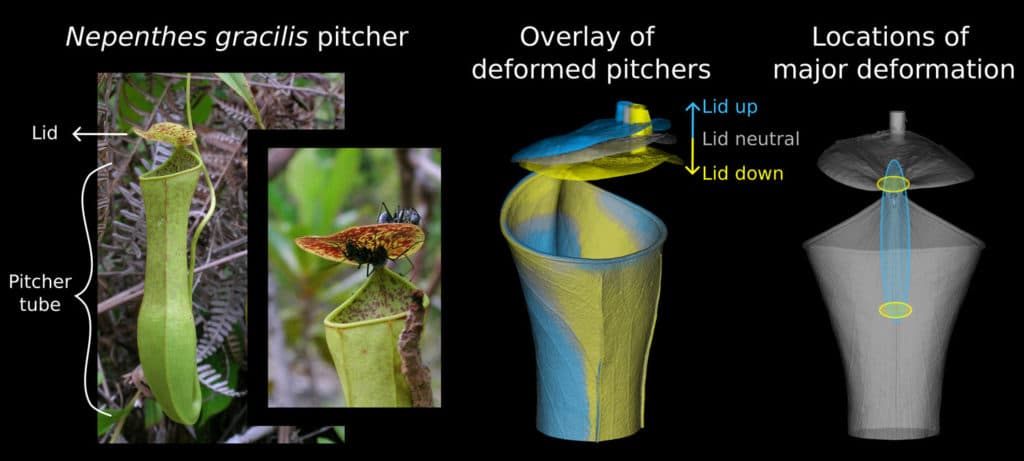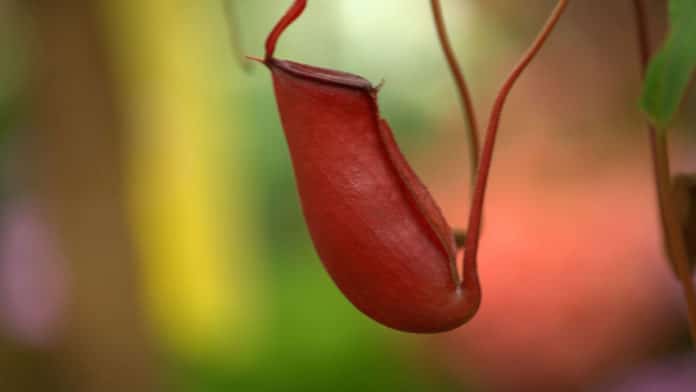Carnivorous pitcher plants capture insects in cup-shaped leaves that function as motionless pitfall traps. Nepenthes gracilis evolved a unique ‘springboard’ trapping mechanism: its elaborate cup-shaped leaves are equipped with a canopy-like hanging lid that turns into a deadly springboard for ants when a falling raindrop hits it.
A new study by the University of Bristol uncovered such carnivorous plants’ deadly workings. Scientists revealed, for the first time, how the deadly spring works.
The results surprised scientists: instead of bending in the lid itself or the narrow constriction between pitcher cup and lid, the spring is located far down in the back of the tubular pitcher wall. The off-center location at the rear of the tube has two effects.
The spring is first made direction-dependent, which causes the lid to move readily downward but not upward. The lid decelerates fast downward when a raindrop strikes it, flinging any insects on its underside into the fluid-filled trap below. However, as the lid rises, the additional spring resistance causes it to move more slowly. As a result, the lid stops moving sooner, and the trap quickly becomes ready to re-capture. Second, the off-center spring prevents the lid from twisting or wobbling, thereby maximizing the transmission of impact energy into downward movement.
Lead author Anne-Kristin Lenz of Bristol’s School of Biological Sciences explained: “If you look at the pitcher shape, you would assume that the deformation happens at the smallest cross-section, which is the transition point from lid to pitcher tube, but in fact, it also deforms further down at the back of the pitcher tube.”

“Pitcher plant traps are lightweight but sturdy. Nepenthes gracilis uses small changes in the trap shape to transmit impact energy with astounding efficiency. We can learn from these plants how to optimize structures geometrically, which could help to save material and weight while still having a functional spring. The springboard trapping mechanism might even inspire designing new mechanical devices for harvesting energy from rain or hail.”
“This clever use of geometry makes Nepenthes gracilis the only known plant to exploit an external energy source to achieve swift movement – entirely free of metabolic costs.”
Journal Reference:
- Anne-Kristin Lenz and Ulrike Bauer. Pitcher geometry facilitates extrinsically powered ‘springboard trapping’ in carnivorous Nepenthes gracilis pitcher plants. Biology Letters. DOI: 10.1098/rsbl.2022.0106
